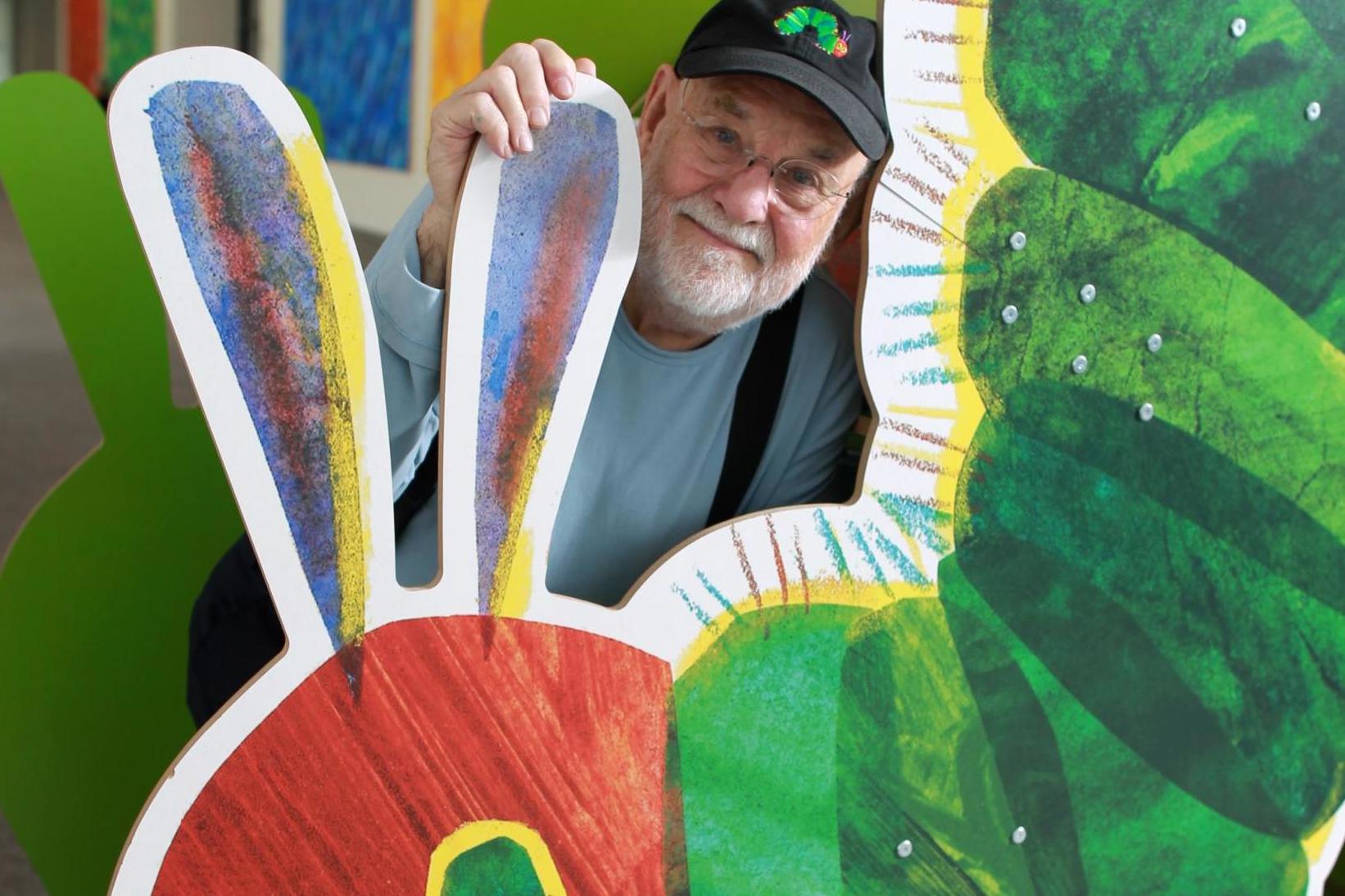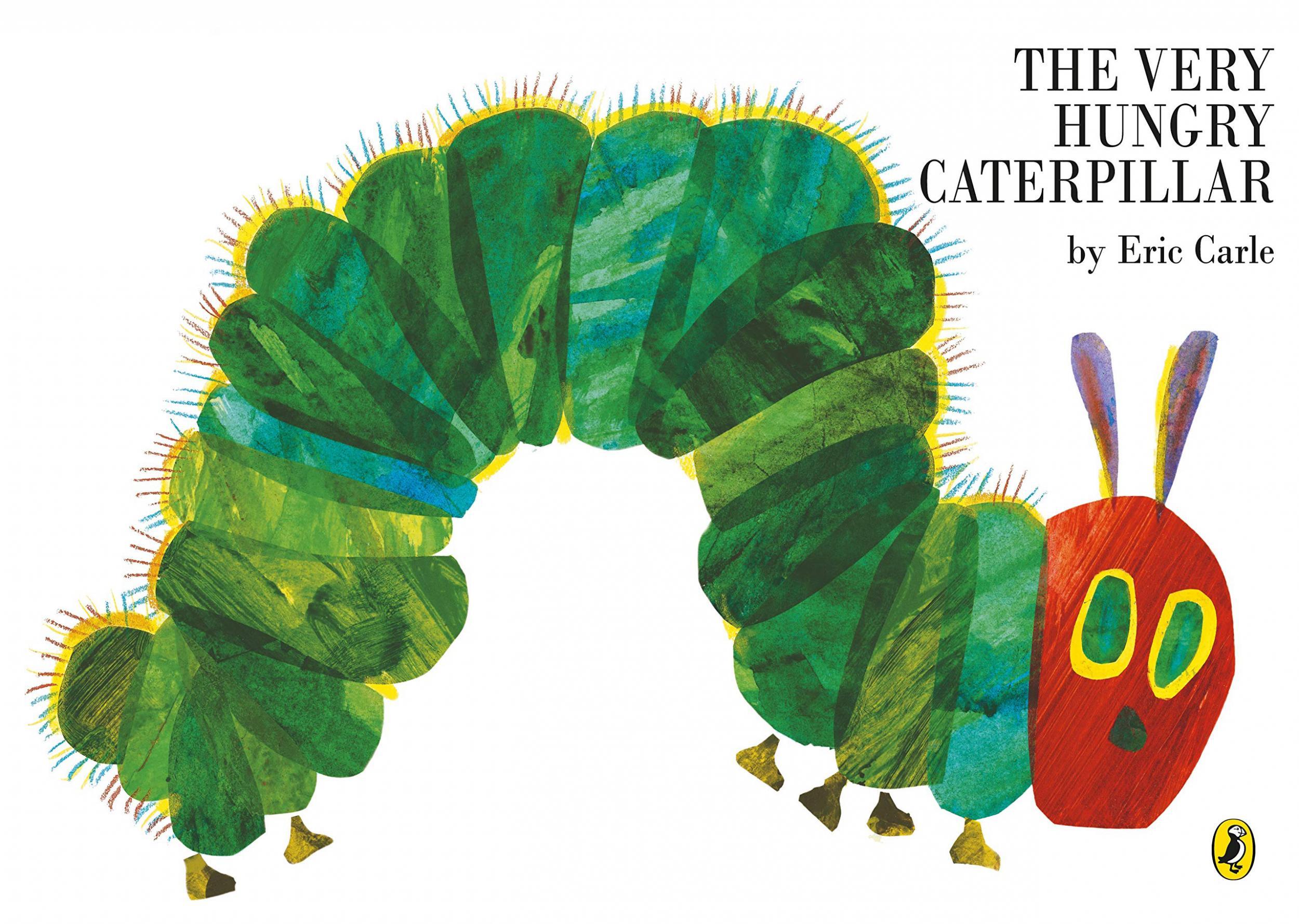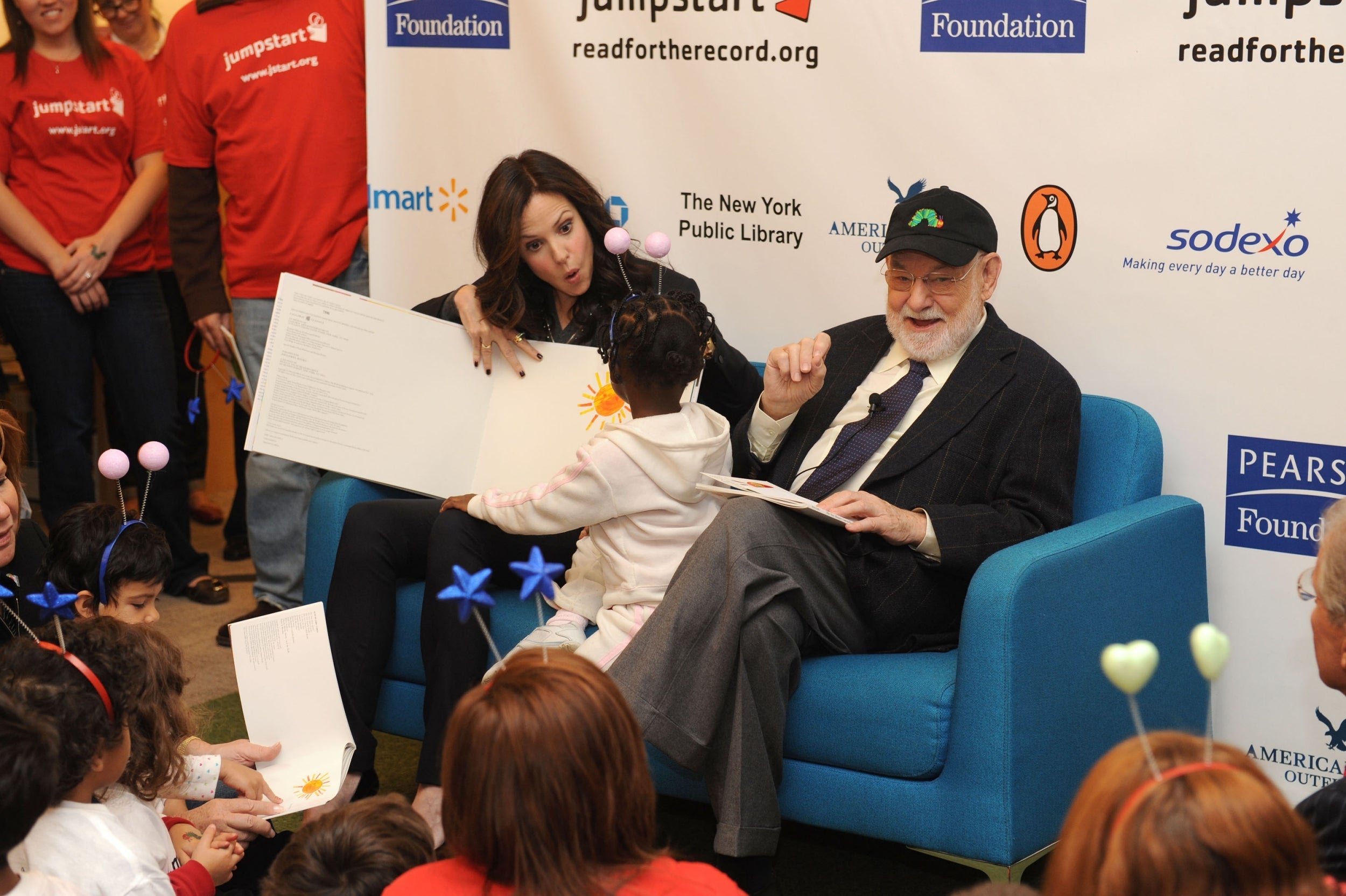The Very Hungry Caterpillar: 50 years of magical reading for children
It’s only 224 words long, says Martin Chilton, but this enchanting story has sold more than 50 million copies, been translated into 62 languages and was once voted the best children’s bedtime story ever


Your support helps us to tell the story
From reproductive rights to climate change to Big Tech, The Independent is on the ground when the story is developing. Whether it's investigating the financials of Elon Musk's pro-Trump PAC or producing our latest documentary, 'The A Word', which shines a light on the American women fighting for reproductive rights, we know how important it is to parse out the facts from the messaging.
At such a critical moment in US history, we need reporters on the ground. Your donation allows us to keep sending journalists to speak to both sides of the story.
The Independent is trusted by Americans across the entire political spectrum. And unlike many other quality news outlets, we choose not to lock Americans out of our reporting and analysis with paywalls. We believe quality journalism should be available to everyone, paid for by those who can afford it.
Your support makes all the difference.Eric Carle’s decision to turn over a new leaf and exchange working as an art director on Madison Avenue for a career creating picture books was a transformation worthy of any caterpillar turned butterfly.
Carle was about to reach 40 when he switched his life up and within a short time he had published The Very Hungry Caterpillar. Although it’s only 224 words long, this enchanting story went on to sell more than 50 million copies, be translated into 62 languages and was once voted the best children’s bedtime story ever, in a World Book Day survey. A copy of The Very Hungry Caterpillar, which was released by The World Publishing Company on 3 June 1969, is bought by someone in the world nearly every 50 seconds. “The storyline is surprisingly universal,” says Carle, who turns 90 this month.
Carle had the rare ability to see the world through the eyes of a child when he had grown into an adult and it is the source of much of the power of The Very Hungry Caterpillar.
It is a simple, beautiful and heart-warming tale of change and growth: a caterpillar eating through so many different foods, through the week, before turning into a gorgeous butterfly. Even in a digital age, the pictures and lyrical story continue to readily engage children’s attention.
Carle’s own love of nature was instilled as a child, albeit during a traumatic time following his family’s move from Syracuse, in New York state, back to Stuttgart, in his parents’ native Germany. He was six when he left America in 1939 and his time in Germany left indelible mental scars. He hated his strict German grammar school, where students were disciplined with bamboo sticks and ordered to worship the Nazi leadership. Even in his eighties, Carle recalls the burning welts left on his hands after beatings.
One brave teacher stood out. Herr Krauss, Carle’s art teacher, took a great personal risk to show the eager student reproductions of forbidden work by artists the Nazis dubbed “degenerate”, such as Picasso, Klee, Matisse and some German Expressionists. Carle later said it had been “a shock” to be shown real art. “I was used to art being flag-waving, gun-toting Aryans – super-realistic Aryan farmers, the women with their brute arms,” he said in 2009.
His temporary escape from the savage reality of life as a child in Nazi Germany came from his uplifting experiences with nature. The walks in meadows and woods with his father Erich were times he remembered as among the happiest of his life. “When I was a small child, as far back as I can remember, my father would take me by the hand and we would go out in nature, and he would show me worms and bugs and bees and ants and explain their lives to me,” Carle told The New York Times in 1994. “It was a very loving relationship.”
As Germany began to fall apart towards the end of the Second World War, his drafted father was taken prisoner in a camp in the Soviet Union. When they met again on a station platform in 1947, the first time Carle had seen his father for eight years, the 18-year-old was shocked by the “bundle of misery” he saw in front of him. Carle, who had been evacuated during the war, says his father was “a broken man”, physically and psychology destroyed.
He weighed just six stone and wore rags and shoes held together by string. He spent the next few years in and out of sanatoriums before dying prematurely. “To this day,” Carle told The Independent in 2005, “I can barely enjoy a good meal because of thinking about my father. I am left with a sadness. It might be psychobabble, but I rehash that period of my life through my books. The child I am helping might just be me.”
In 1952, Carle arrived back in New York with $40 in his pocket. He landed a job as a graphic designer for The New York Times before being drafted into the US army during the Korean War. He was stationed in Germany as a mail clerk, a posting that brought back grisly memories of the time, as a 15-year-old, he’d had to dig trenches for the Nazis on the Siegfried line.
After his time in the army ended, he returned to his old job at The New York Times, before switching to a job on Madison Avenue as the art director at an advertising agency specialising in pharmaceutical campaigns. He worked in that field for several years before a twist of fate took him into the world of children’s literature

In 1967, author Bill Martin Jr spotted a distinctive red lobster Carle had painted for an advert for antihistamine tablets. Martin got in touch with Carle and asked him to illustrate a children’s book called Brown Bear, Brown Bear, What Do You See? It was the turning point of Carle’s life. The idea “set me on fire”, he admitted. “I bought my two children a book once in a while, but I had no deep interest in children’s books whatsoever,” Carle said in that 1994 interview. “Everyone always assumes I love children. I do, but I don’t want to be surrounded by them. I’m about average when it comes to children: I like some, and some I don’t like.”
After working with Martin, Carle began thinking about creating his own book. One day he was idly playing with a hole puncher, making holes in a stack of papers. He thought of a fat bookworm and began sketching out a story called A Week with Willi the Worm. His editor Ann Beneduce did not warm to the idea of a worm and suggested that he turned the character into a caterpillar.
The idea for a distinctive hole running through the pages caused problems but Beneduce located a Japanese printer able to produce copies for an economical cost and the book was published by The World Publishing Company with little fanfare on a Tuesday in June 1969, a day overshadowed by news of a naval disaster that cost 74 American lives. The Very Hungry Caterpillar was far from an instant success and sales were slow. “It took five or six years for me to make enough money to live a very modest life,” Carle says.
Over the course of the next five decades, Carle became one of the most celebrated author-illustrator’s of children’s fiction in the world, his distinctive collages delighting readers in more than 70 books. Among his famous fans are Barack and Michelle Obama. Former president George Bush Jr even nominated The Very Hungry Caterpillar as his favourite story when he was a child – which is surprising given that he was 23 when it first came out.
Musician Dolly Parton, who has been a fervent campaigner for children’s literacy through her Imagination Library (“she’s an amazing literacy philanthropist,” says Carle), has even written an “Afterword” for a special 50th commemorative edition of the book published by Philomel, the children’s imprint of Penguin in America.
So why is this book such a classic?
The original edition was small enough for a young child to hold and the interactive element of little fingers prodding through the holes in the pages, which mimic the caterpillar’s chomping, had an obvious immediate appeal. This design feature was incorporated so well it felt like a natural part of the book. The Very Hungry Caterpillar is a simply told story, one that every child can identify with – the excitement of eating all those delights, concern for the poorly caterpillar who didn’t know any better and relief that he has not only survived, but has actually transformed. It is a magical, happy ending. The language, like the artwork, is simple and charming.

Furthermore, The Very Hungry Caterpillar is a model “learning story”, which draws in both adults and children time and time again. From the familiarity of counting fruit – one apple, two pears, three plums – to sequencing the days of the week and arriving at Saturday, when seasoned readers can evaluate the nutritional value of foods consumed, or older readers can enjoy the challenge of memorising them, from one piece of chocolate cake, to the final slice of watermelon.
Above all is the science behind the life cycle of this particular caterpillar that is gently woven into the story, from the egg and caterpillar, through cocoon and the much-anticipated final stage. However many times they have heard the story before, children are stunned anew by the change, the colour and beauty of Carle’s butterfly, when they turn the final page. A perfect story ending.
“Most children can identify with the helpless, small, insignificant caterpillar, and they rejoice with it when it turns into a beautiful butterfly,” Carle told People in March 2019. “It is an affirmation to all children. It says: ‘I too can grow up. I too can unfold my wings and fly into the world’. I think it’s this message of hope that resonates.”
There have been numerous spin-offs from the book over 50 years, including toys, puzzles, cutlery, clothes, video games, bed linen, cards and even shower gel. A special commemorative song, written and produced by Matt Rever, has earned more than a million hits on YouTube. One spin-off deemed a flop was the 1993 television adaptation made by the production company that filmed The Snowman. “It was awful. God-awful. I’m ashamed of it,” says Carle.
Carle’s second wife Barbara, a former special educational needs teacher, was instrumental in helping set up The Eric Carle Museum of Picture Book Art in Amherst, Massachusetts, which opened in 2002. Around that time, she moved with him to Florida, where he continued to work in a studio he had designed, one full of light from the large picture windows. Carle, who always wears a lab coat to work, continued working after Barbara’s death in 2015. His unique style, using colourful acrylic paints and thin tissue-paper collage, continues to beguile readers. He has another book coming out in July called What’s Your Favorite Food?
His wonderful legacy includes Papa, Please Get the Moon for Me; Does a Kangaroo Have a Mother, Too?; Slowly, Slowly, Slowly, Said the Sloth; Mister Seahorse; The Very Busy Spider; and the wonderful The Very Quiet Cricket, which is about a lonely cricket who starts to sing again after meeting his true love. Carle says the tale was evoked by memories of the time he spent outdoors with his father. Carle’s own favourites, incidentally, were Why Noah Chose the Dove, a book he illustrated for Isaac Bashevis Singer, and his own Do You Want to Be My Friend?
Carle sometimes told children he met at book signings that “growing up can be very difficult”. He was convinced that young readers love The Very Hungry Caterpillar because it arouses simple emotions and a sense of hope. His book conjures those feelings in adult readers, too, not least for the dream that after a week of gorging – through apples, strawberries, plums, pears, an ice cream cone, chocolate cake, a pickle, a slice of Swiss cheese, a piece of salami, a lollipop, a piece of cherry pie, a sausage, a cupcake and one slice of watermelon – it’s possible to re-emerge as a beautiful butterfly.
Experts have pointed out that some of the details in Carle’s illustrations are wrong – the butterfly wings are on upside down – a detail that has never bothered the amiable author. “It’s true,” he says. “They are on upside down, but it’s a fantasy. I am the artist and can do whatever I want.”
Join our commenting forum
Join thought-provoking conversations, follow other Independent readers and see their replies
Comments